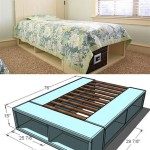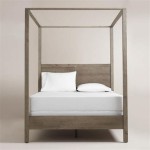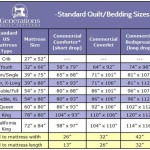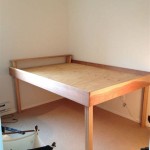Queen Size vs Twin Bed: Essential Aspects to Consider
Choosing the right bed size is crucial for a comfortable and restful sleep. Two common choices are queen size and twin beds. Understanding the key differences between these sizes is essential to make an informed decision that meets your specific needs.
Size and Dimensions
Queen size beds measure 60 inches wide (5 feet) and 80 inches long (6 feet 8 inches). This size is suitable for individuals who prefer ample sleeping space, couples, or those who enjoy stretching out. Twin beds, on the other hand, are more compact, measuring 38 inches wide (3 feet 2 inches) and 75 inches long (6 feet 3 inches). Twin beds are ideal for children, teenagers, single adults, or guest rooms where space is limited.
Sleeping Space and Comfort
The size of the bed directly impacts the amount of sleeping space available. Queen size beds offer a generous 50 square feet of surface area, while twin beds have a more confined 28.5 square feet. Queen size beds provide more room to move around and stretch out comfortably, making them a better choice for couples or individuals who require more space. Twin beds, while more modest in size, are still suitable for those who prefer a smaller bed or have limited space.
Headroom and Legroom
Headroom is not a significant concern in either queen size or twin beds as they both have standard heights. Legroom, however, is affected by the length of the bed. Taller individuals may find twin beds slightly cramped, especially if they prefer to sleep fully extended. Queen size beds offer more legroom, making them a better choice for those who are tall or prefer extra space for their feet.
Mattress Selection
The size of the bed also determines the size of the mattress required. Queen size beds require queen size mattresses, which are widely available and offer a wide range of options to suit different comfort preferences. Twin beds use twin size mattresses, which are more suitable for smaller frames or single sleepers. Both queen size and twin mattresses come in various types, such as foam, spring, and hybrid, so you can choose one that aligns with your sleeping style.
Room Size and Layout
The size of the room and its layout play a role in choosing between a queen size or twin bed. Queen size beds are suitable for larger bedrooms with ample space. They can be paired with other furniture, such as nightstands and dressers, without feeling cramped. Twin beds are more versatile and can fit into smaller rooms or areas where space is at a premium. They can also be used as guest beds or in children's bedrooms.
Conclusion
Choosing between a queen size and a twin bed depends on several factors, including sleeping preferences, space availability, and the size of the room. Queen size beds offer more sleeping space and comfort, making them ideal for couples or individuals who require more room. Twin beds are more compact and versatile, making them suitable for smaller spaces, single sleepers, or guest rooms. By considering these essential aspects, you can make an informed decision that will ensure a comfortable and restful sleep.

Twin Vs Queen Size Mattress How To Choose Which Is Best Nectar Sleep

Twin Vs Queen Size Mattress Who Wins The Great Bed Debate Turmerry

Twin Vs Full Queen Which Mattress Size Is Right For You Amerisleep

Twin Vs Full Queen Which Mattress Size Is Right For You Nectar Sleep

Queen Vs Twin Xl What S The Difference Amerisleep

Queen Vs Twin Mattresses What S The Difference For Me Eachnight

Twin Vs Full Queen Which Mattress Size Is Right For You Dreamcloud

Twin Vs Queen Size Mattress What Is The Difference Dreamcloud

Twin Xl Vs Queen What Is The Difference Nectar Sleep

The Ultimate Mattress Size Chart And Bed Dimensions Guide Sleep Advisor
Related Posts







